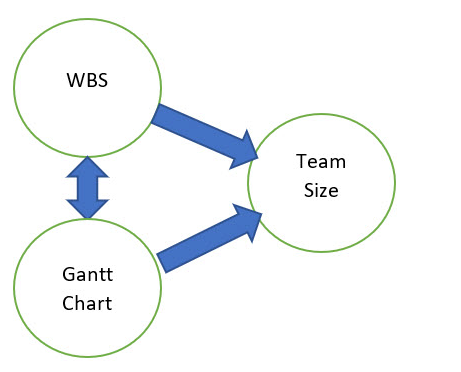Resourcing is a key component of any projects success or failure, to
underestimate the importance of a project team, is at the project managers
peril. Frequently, projects are executed with teams of inadequate size and
composition, due to budget or internal skill-set. Other factors include poor
comprehension of the nature and amount of the work to be done, and a
superficial or in-existent analysis of the required skills in the team members.
To engineer the project team is an important process to be done
carefully. To do that, it’s fundamental first to have a clear understanding of
the nature of the scope of the work. A good requirements elicitation, a correct
project scope definition and a detailed work breakdown structure are key
process to ensure the comprehension of work that the project involve.
Once the work
breakdown structure is clear, is the moment to meditate on the preassigned
human resources to the project team. Is it suitable in quantity and quality?
The organization has a fixed staff, or the organization hire people to create a
dedicated team for the project? Probably the answer will depend on the
organization and in the particular project.
To define the
team, the first step is to assign to each activity or work package, the
required number of people with their associated qualifications or expertise.
Once finished this exercise, it’s necessary to check the timeframe of the
execution of the tasks. For instance, if several activities that requires the
same specialists can be done in sequence, the number of persons to consider in
the team are few than in the case if the activities should be executed in
parallel.
This optimization
can only be possible when the problem is quantitative (number of people), but
not in the case in which the resource gap is qualitative. For instance, if the
project requires a doctor in robotics, the project cannot be delivered with who
don’t have knowledge in robotics, even if sponsors provide double or triple the
time. This is obvious, but frequently is forgotten. In this instance there is a
degree of freedom: by trading off the number of people with the execution time.
The same set of activities can be executed slower with less people or faster
with more people. Therefore, there is an optimization analysis to be done. Off
course, this analysis is constrained in certain limits. For example, a task
originally planned to do with three people can be accelerated if there is an
introduction of two additional persons, but if ten extra people are added, they
will obstruct the fluid development of the task. In this case entropy is being
produced, and the task will not be finished early.
An instrument or
tool to identify the gap of skilled people in the project team is the resource
gap table, as depicted below.
Being conscious of the project team resource gap is
important in the planning process. It is useful to ask for resources, time or,
in the worst case, at least to be conscious of the risks and communicate them
opportunely to stakeholders.




Comments
Post a Comment